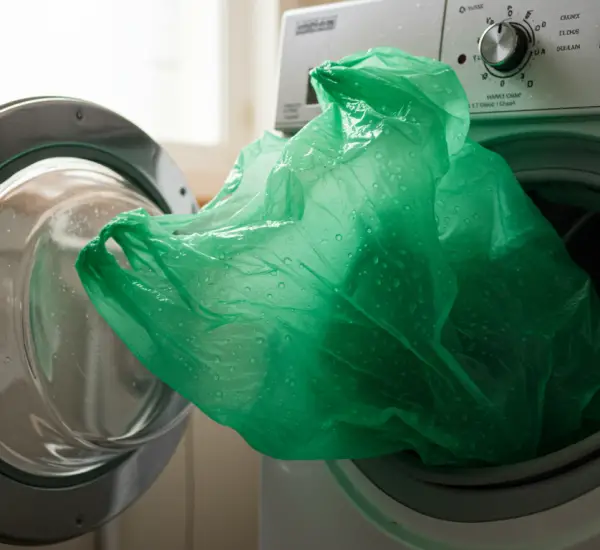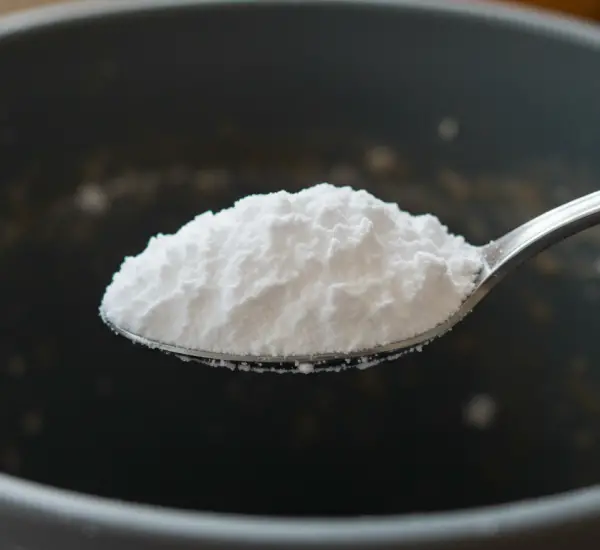Keeping a toilet clean and sparkling white can often feel like an uphill battle. The accumulation of limescale, tartar, and hard water stains at the bottom of the toilet bowl is a common issue in many households. These deposits form quickly, leaving the porcelain looking yellowed or stained, even just days after a thorough cleaning. The frustrating part is that no matter how much scrubbing is done, the stains seem to return, and regular cleaning often feels like a never-ending chore. Many people turn to commercial descaling products for a solution, but these are often expensive, filled with harsh chemicals, and sometimes ineffective.
Not only can chemical cleaners be costly, but they also pose health and environmental risks. Prolonged inhalation of the fumes can be harmful, and the runoff from these chemicals can be damaging to the ecosystem. Thankfully, there is a simple, natural, and highly effective method to tackle limescale and tartar in the toilet without resorting to toxic products. This method uses two ingredients that are inexpensive, safe, and probably already in your kitchen: baking soda (sodium bicarbonate) and white vinegar.
Why Baking Soda and White Vinegar Work
Both ingredients have multiple household uses beyond cooking and baking. White vinegar is a natural disinfectant and degreaser with excellent stain-removing properties. It neutralizes odors and kills many types of bacteria and germs. Baking soda, on the other hand, is mildly abrasive, making it perfect for scrubbing, and its effervescent reaction when combined with vinegar helps break down stubborn limescale deposits. Together, they form a powerful cleaning duo capable of transforming a dull, yellowed toilet into a bright, sparkling one.
This combination also slows down future limescale buildup, making maintenance easier over time. Regularly cleaning your toilet with this method not only restores whiteness but also prevents the accumulation of new tartar, reducing the need for harsh chemicals.
Step-by-Step Guide to Cleaning Your Toilet Naturally
Step 1: Prepare Your Toilet
Before starting, ensure the toilet bowl is as clear as possible. Flush to remove excess water if needed, and have a toilet brush ready. For safety and hygiene, it’s advisable to wear gloves.
Step 2: Apply White Vinegar
Pour approximately 500 milliliters (about 2 cups) of white vinegar directly into the toilet bowl. Use a clean toilet brush to scrub the areas with visible yellow stains and limescale deposits. Focus on the bottom of the bowl and any areas along the waterline that show discoloration. Allow the vinegar to sit for at least one minute to start dissolving the mineral deposits.
Step 3: Add Baking Soda
Measure out about 150 grams (roughly ½ cup) of baking soda and sprinkle it evenly into the toilet bowl. The combination of vinegar and baking soda will create a fizzy, effervescent reaction. This reaction helps lift and loosen stubborn limescale and tartar from the porcelain surface.
Step 4: Pour More Vinegar
After adding the baking soda, pour an additional 500 milliliters (2 cups) of white vinegar into the toilet bowl. You will notice a vigorous foaming action, which is normal. The fizzing works to break down tough stains and mineral deposits, allowing them to be scrubbed away easily.
Step 5: Let the Mixture Sit
Allow the mixture to sit for at least 10 minutes. For more severe or long-standing deposits, leave the solution for up to 30 minutes to maximize its effectiveness. During this time, the chemical reaction continues to dissolve limescale, making scrubbing far easier.
Step 6: Scrub the Toilet Bowl
After the solution has had time to work, use your toilet brush to scrub all areas of the bowl, especially around the waterline and any remaining yellow stains. The effervescent action of baking soda and vinegar should have loosened most, if not all, of the tartar, making it easy to remove.
Step 7: Flush and Inspect
Once you’ve scrubbed thoroughly, flush the toilet to rinse away all residue. Check for any remaining stubborn spots and repeat the process if necessary. In most cases, a single treatment is sufficient for moderate buildup, while regular maintenance prevents the need for repeated deep cleans.
Tips for Maintaining a Sparkling Toilet
-
Regular Maintenance: Even a simple rinse with vinegar once a week can prevent heavy tartar accumulation and make cleaning easier.
-
Avoid Harsh Chemicals: This method reduces reliance on aggressive chemical cleaners, protecting both your health and the environment.
-
Use Gloves: Protect your hands from prolonged exposure to vinegar and any bacteria in the toilet.
-
Address Stubborn Stains Early: The longer limescale sits, the harder it is to remove. Regular, gentle cleaning keeps buildup manageable.
-
Combine with Other Natural Cleaners: For added freshness, consider adding a few drops of essential oils to your vinegar solution. Lavender or tea tree oil can enhance disinfectant properties and leave a pleasant scent.
Why This Method Is So Effective
The success of this natural cleaning method lies in the reaction between baking soda and vinegar. The effervescence mechanically lifts stains while the acidity of vinegar dissolves mineral deposits. This dual action is far gentler than abrasive chemical cleaners but just as effective, making it suitable for regular use. Additionally, these ingredients are inexpensive, eco-friendly, and versatile, proving useful in countless other cleaning scenarios around the house.
Conclusion
Cleaning a toilet doesn’t need to be a laborious or costly task. By using a combination of baking soda and white vinegar, you can remove even the most stubborn tartar and limescale naturally and effectively. This method not only restores a bright, clean appearance to your toilet but also minimizes future buildup, saving time, money, and the use of harmful chemicals.
With just a few simple steps and two pantry staples, you can maintain a sparkling, hygienic toilet effortlessly. Say goodbye to harsh cleaners, yellow stains, and persistent limescale—and say hello to a cleaner, healthier home with this natural, foolproof method.



